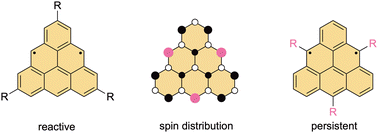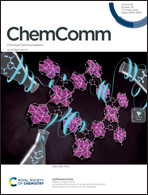The taming of Clar's hydrocarbon
Abstract
Triangulene is the smallest non-Kekulé graphene fragment known as Clar's hydrocarbon. Due to its open-shell electronic structure, triangulene is a promising molecular building block of carbon-based organic materials for spintronics and quantum molecular science. It comprises six benzenoid rings arranged in a triangular shape with two unpaired electrons delocalized over the entire conjugated core, making this molecule highly reactive. A triplet ground state is predicted for this hydrocarbon by Ovchinnikov's rule, or Lieb's theorem, in accord with Hund's rule. The pioneering work on triangulene was performed almost 70 years ago by Erich Clar, who attempted to prepare the pristine compound. Since then, several synthetic approaches to prepare this molecule have been exploited. The extreme reactivity of triangulene can be circumvented using on-surface techniques or by installation of sterically demanding substituents, which kinetically stabilize the diradical core against oligomerization in solution. The first two examples of a persistent derivative of triangulene were simultaneously and independently developed last year. This article presents a historical development in the synthesis of triangulene and its derivatives and outlines possible future applications in ferromagnetic materials, electrically conductive polymers or quantum computing.



 Please wait while we load your content...
Please wait while we load your content...